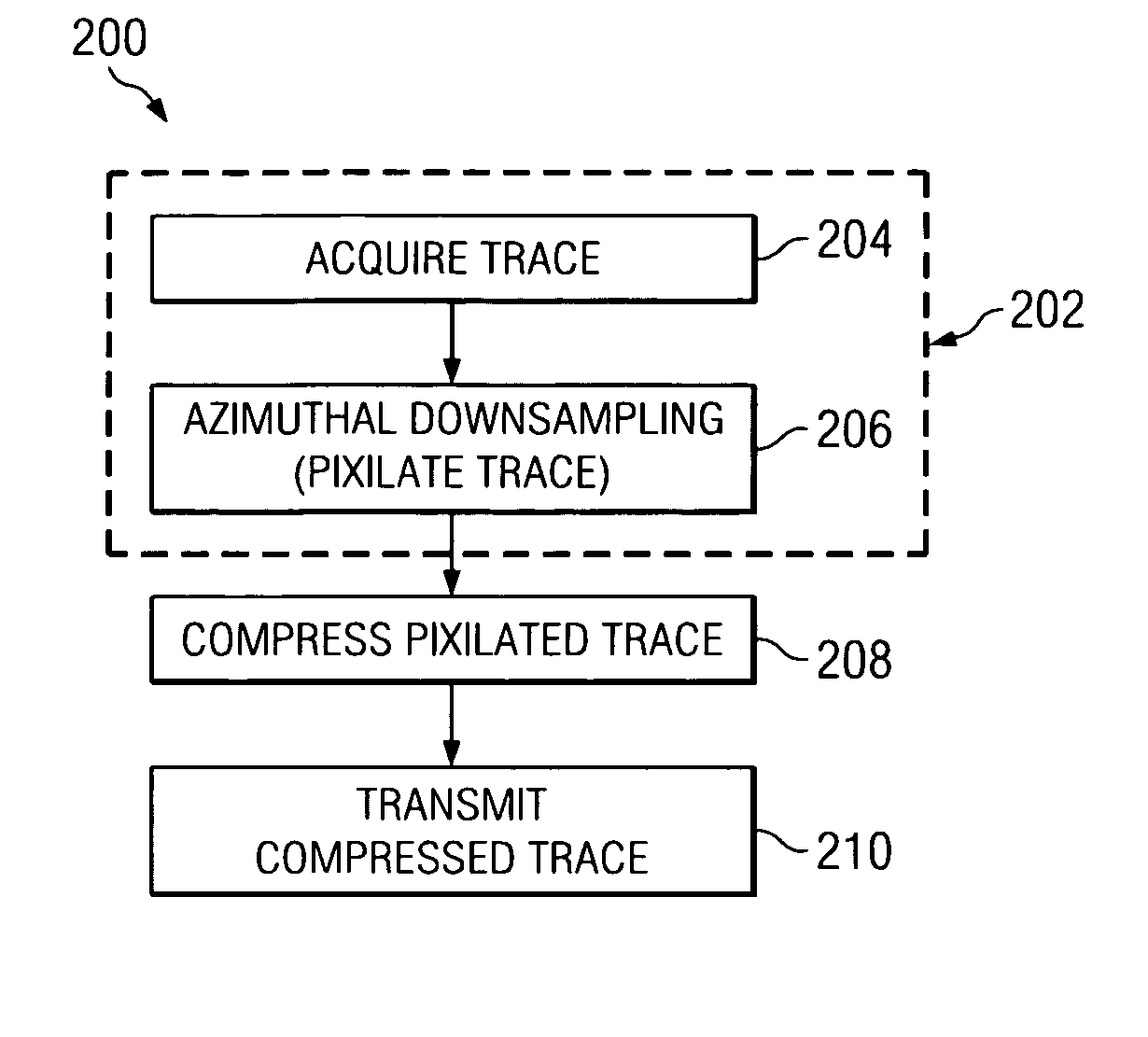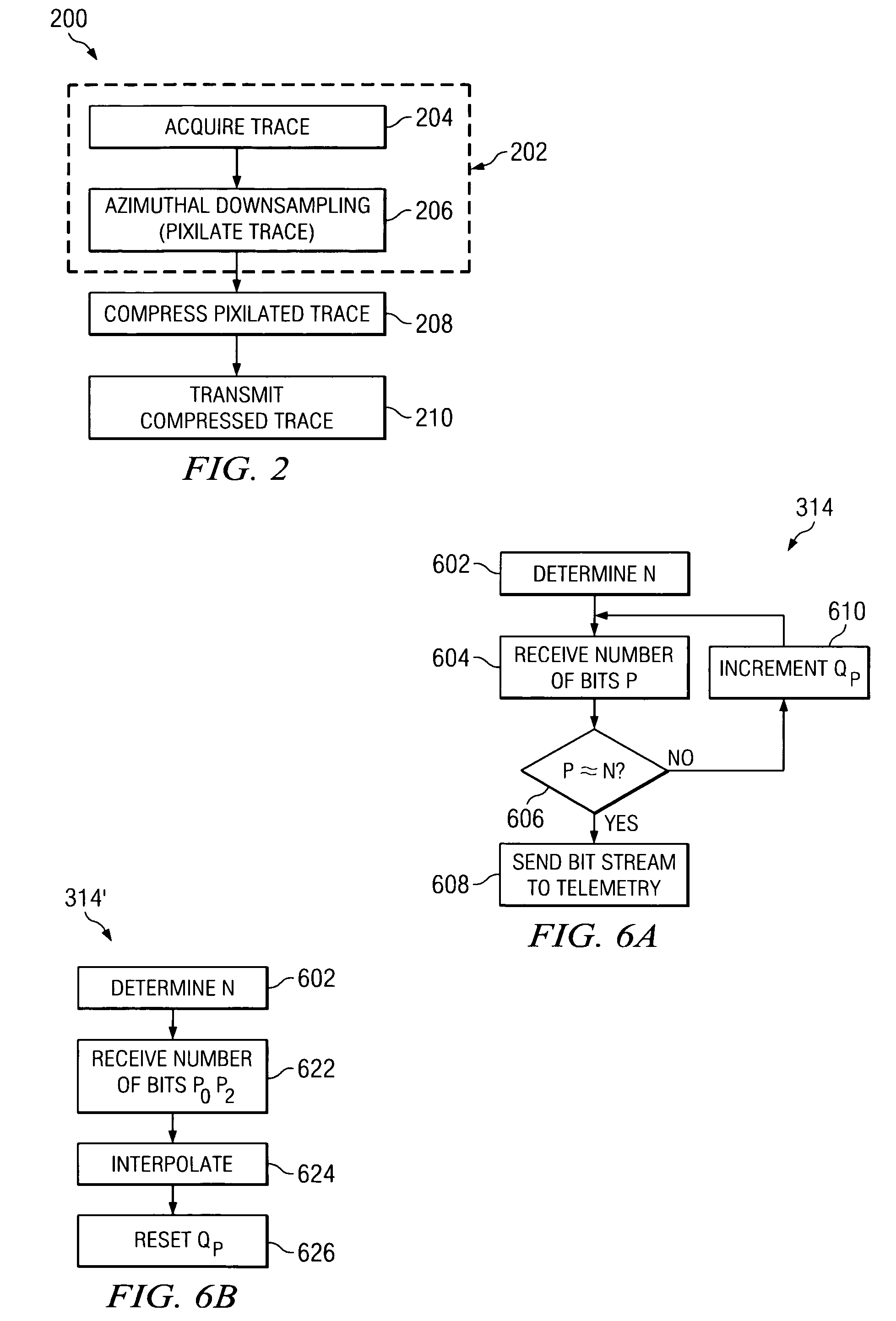Data compression method for use in downhole applications
a data compression and data technology, applied in the field of data communication, can solve the problems of insufficient communication bandwidth with the surface during lwd operations, inability to meet the needs of typical lwd applications, and limited data transmission rates (bandwidth), so as to reduce computational requirements, reduce latency, and reduce computational resources. the effect of limited resources
- Summary
- Abstract
- Description
- Claims
- Application Information
AI Technical Summary
Benefits of technology
Problems solved by technology
Method used
Image
Examples
Embodiment Construction
[0025]Before proceeding with a discussion of the present invention, it is necessary to make clear what is meant by “azimuth” as used herein. The term azimuth has been used in the downhole drilling art in two contexts, with a somewhat different meaning in each context. In a general sense, an azimuth angle is a horizontal angle from a fixed reference position. Mariners performing celestial navigation used the term, and it is this use that apparently forms the basis for the generally understood meaning of the term azimuth. In celestial navigation, a particular celestial object is selected and then a vertical circle, with the mariner at its center, is constructed such that the circle passes through the celestial object. The angular distance from a reference point (usually magnetic north) to the point at which the vertical circle intersects the horizon is the azimuth. As a matter of practice, the azimuth angle was usually measured in the clockwise direction.
[0026]It is this meaning of “a...
PUM
 Login to View More
Login to View More Abstract
Description
Claims
Application Information
 Login to View More
Login to View More - R&D
- Intellectual Property
- Life Sciences
- Materials
- Tech Scout
- Unparalleled Data Quality
- Higher Quality Content
- 60% Fewer Hallucinations
Browse by: Latest US Patents, China's latest patents, Technical Efficacy Thesaurus, Application Domain, Technology Topic, Popular Technical Reports.
© 2025 PatSnap. All rights reserved.Legal|Privacy policy|Modern Slavery Act Transparency Statement|Sitemap|About US| Contact US: help@patsnap.com



